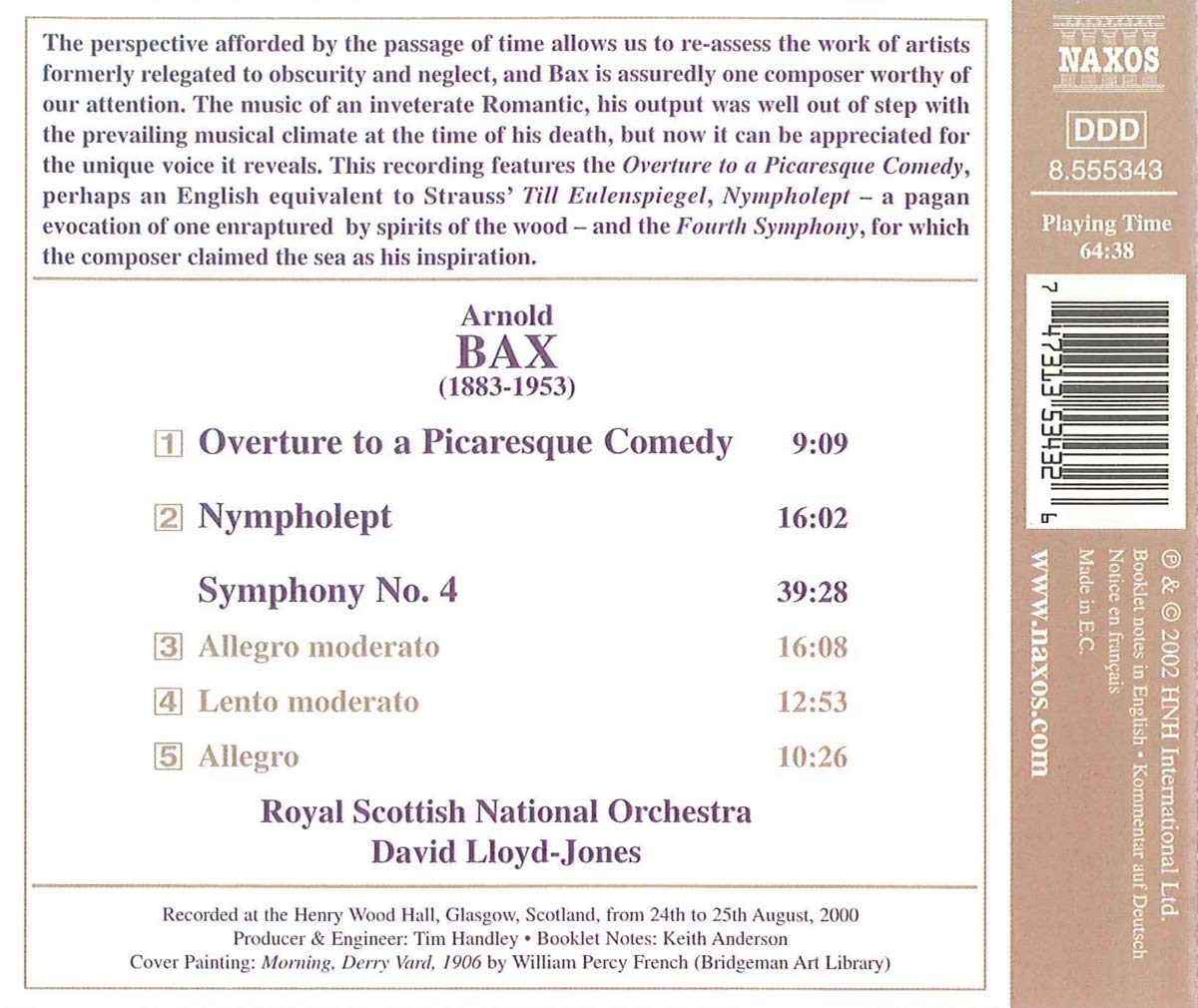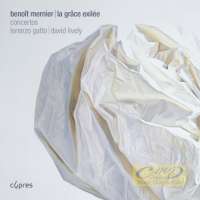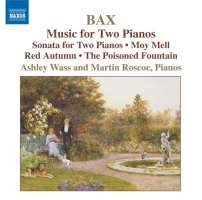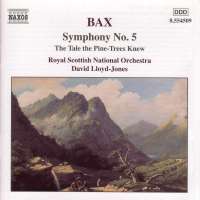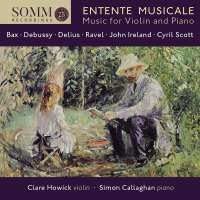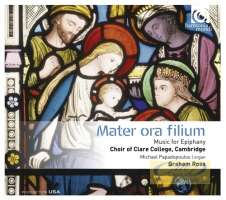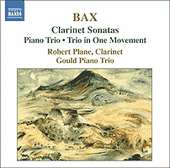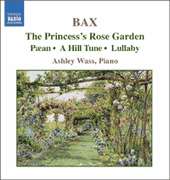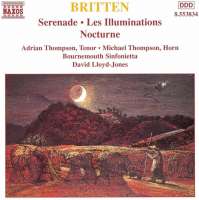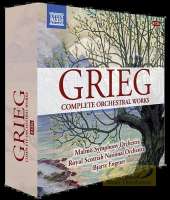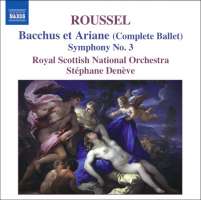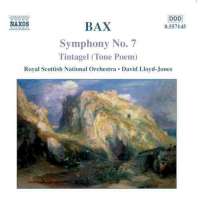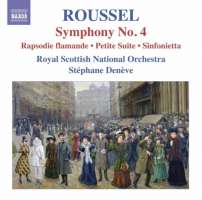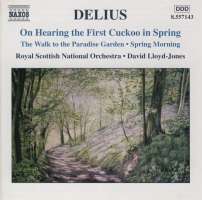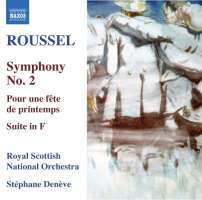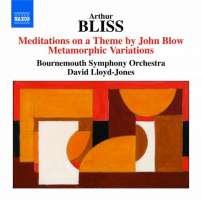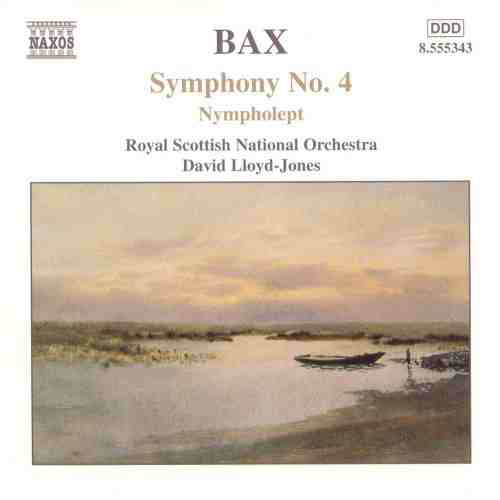
kompozytor
Bax, Arnold
tytuł
BAX: Symphony no. 4, Nympholept
wykonawcy
Royal Scottish National Orchestra;
Lloyd-Jones, David
Lloyd-Jones, David
nr katalogowy
8.555343
opis
Bax dedicated his Fourth Symphony to Paul Corder, son and pupil of Frederick Corder and a member of the Bax circle. The work was completed at Morar in February 1931 and was first performed a year later in San Francisco by the San Francisco Symphony Orchestra under Basil Cameron. •
The composer claimed the sea as his inspiration, at high tide in the sunshine, explaining the symphony as an evocation of nature. Scored for triple woodwind, six horns, three trumpets and trombones, tenor and bass tuba, percussion, harp, celesta, organ and strings, the symphony starts with a strongly marked theme, underpinned by a bottom E flat from the double basses, bassoons and double bassoon and organ 16-foot pedal. The sea surges forward and back again in rapider figuration, leading to a third characteristic element with a Scottish flavour, material that is developed before the appearance of an oboe melody, accompanied by clarinets, followed by a flute melody, accompanied by woodwind and four solo cellos, the second subject group. The development of these ideas includes a lilting Allegretto semplice before the original mood is re-established. The slow movement, as Lewis Foreman has pointed out, contains motivic references and reminiscences of the 1918 piano Romance, written for Harriet Cohen, but now presumably associated with Mary Gleaves. The long-drawn out melody of the E major slow movement is introduced by the woodwind, bringing a further evocation of the sea, still and then mounting in power, with moments that seem again to suggest Scotland and the west coast. The final Allegro bursts into the final serenity of the slow movement, its stirring Stravinskyan opening giving way to a march and the sound of distant trumpets. There is a moving relaxation of tension in a passage for woodwind and solo violin, the oboe melody taken up then by the cellos and by the first violins. An Allegro scherzando leads to a flute solo gently reminding us of Scotland before a final triumphal march that brings the preceding ideas together in conclusion.
nośnik
CD
gatunek
Muzyka klasyczna
producent
Naxos
data wydania
15-04-2002
EAN / kod kreskowy
747313534326
Produkt nagrodzony:
MusicWeb International: 'Nominee for Recording of the Year' (2012)

(Produkt nie został jeszcze oceniony)
cena 58,00 zł
lubProdukt na zamówienie
Wysyłka ustalana indywidualnie.
Darmowa wysyłka dla zamówień powyżej 300 zł!
Darmowy kurier dla zamówień powyżej 500 zł!
sprawdź koszty wysyłki